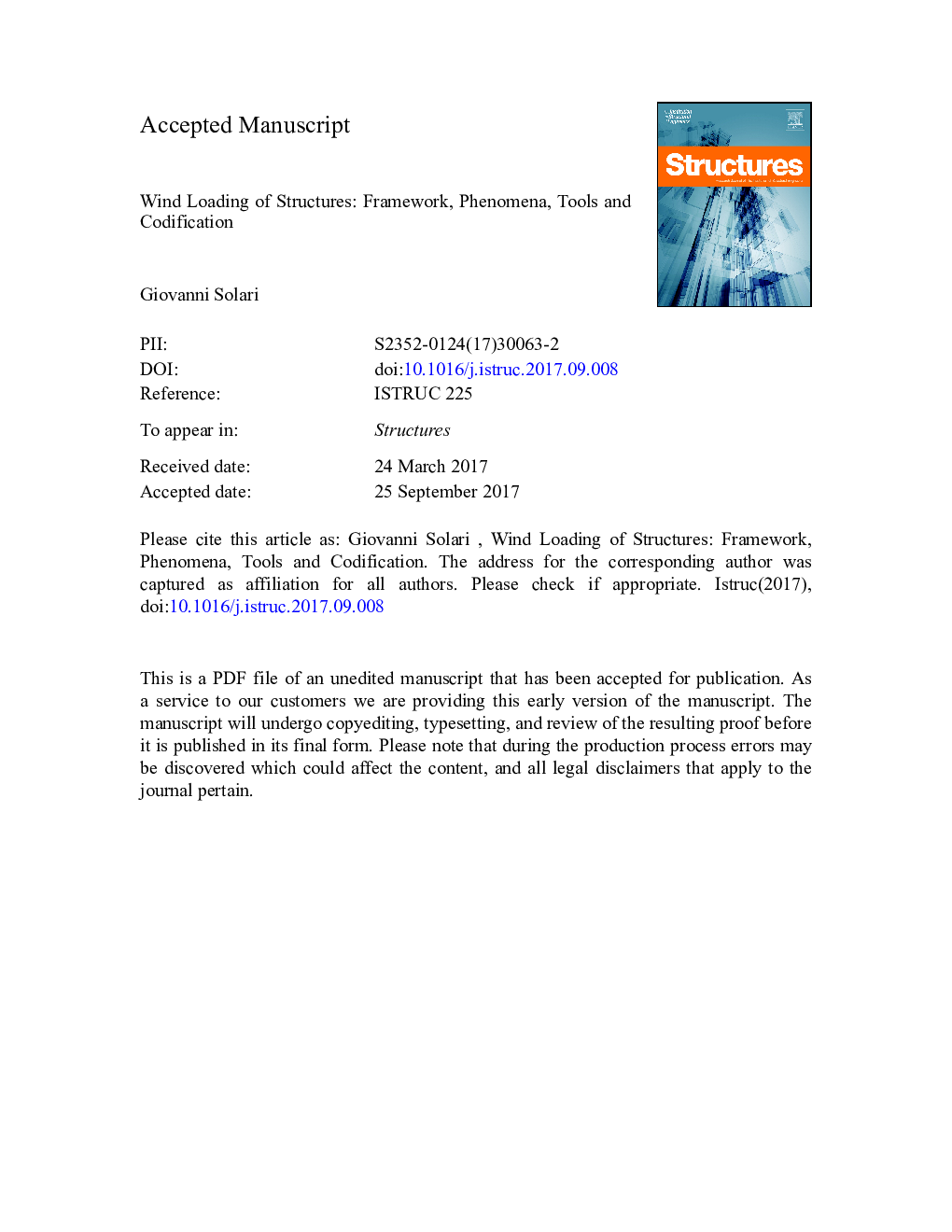| Article ID | Journal | Published Year | Pages | File Type |
|---|---|---|---|---|
| 4927864 | Structures | 2017 | 51 Pages |
Abstract
The wind is the most destructive natural phenomenon. Its actions are thus crucial for the safety and cost of construction. Their evaluation is a cornerstone of civil engineering and a societal need for safety and economy. Wind Engineering is best defined as “the rational treatment of interactions between wind in the atmospheric boundary layer and man and his works on the surface of Earth”. The International Association for Wind Engineering promotes international co-operation among scientists, engineers and other professionals for the advancement of knowledge in the broad field of Wind Engineering. The study of the wind loading of structures is a main topic of Wind Engineering and even more the subject around which Wind Engineering was born and evolved. This paper provides a general framework, even if necessarily not exhaustive, of the main phenomena to which structures are exposed due to wind actions and the most appropriate analytical, experimental and numerical tools to evaluate and mitigate their consequences in order to make them safe, serviceable, sustainable and cost-efficient. This discussion is herein developed keeping in mind, as a reference point, the code provisions. The conclusions provide a synthetic overview of the emerging issues on which the research on wind loading is in progress worldwide.
Keywords
Related Topics
Physical Sciences and Engineering
Engineering
Civil and Structural Engineering
Authors
Giovanni Solari,
